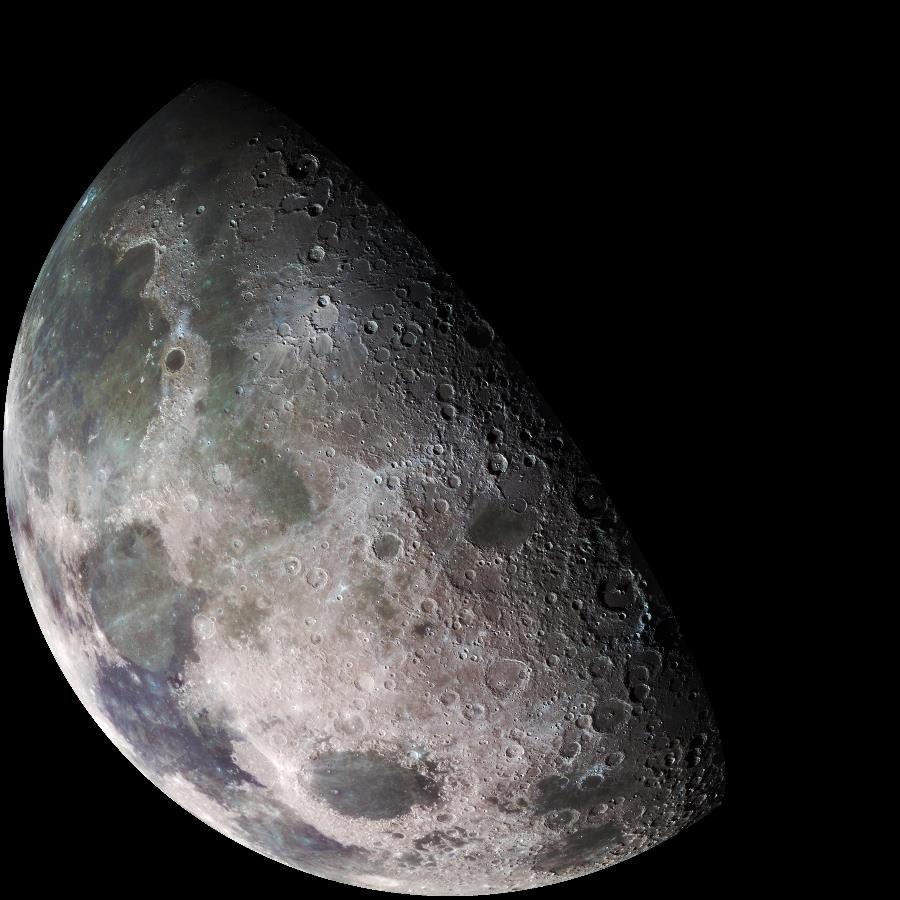|
Lunar Water |
|
|
..
Experiment Casts Doubt on Origins
of Lunar Water
The mystery of how the moon got its surface water has just got deeper, following the failure of an attempt to replicate the mechanism that was thought to produce it. Three separate space missions last year reported detecting a sheen of water only molecules thick over large parts of the moon's surface. Many planetary scientists assumed the water was created when particles from the solar wind hit lunar soils, but this idea has now been thrown into doubt. "The solar wind cannot produce water in sufficient quantities to account for the results of the three missions that observed it," says Raúl Baragiola, a member of the team at University of Virginia, Charlottesville, that tried to reproduce this effect in the lab. For years, theorists have believed that protons from the solar wind could produce water on the moon by prying oxygen atoms away from minerals in the lunar soil and combining with them to form hydroxyl radicals (OH) or water (H2O). This hypothesis gained credibility recently with the observations of hydroxyl and water by NASA Deep Impact and Cassini missions, and the Indian probe Chandrayaan-1. Bone dry Baragiola and colleagues tested the idea by blasting protons at crystals of ilmenite and anorthite, two of the most common lunar minerals, in a high vacuum. They found no sign that water or hydroxyl radicals were produced. In fact, they found the opposite: the protons destroyed any traces of water that had remained in the minerals after 24 hours of baking prior to the experiment. Carle Pieters of Brown University in Providence, Rhode Island, who was lead author of last year's report from Chandrayaan-1, admits to being puzzled by the results. But Jeffrey Gillis-Davis, a planetary geologist at the University of Hawaii, thinks the established hypothesis might yet be correct. "This does not put the final nail in the coffin" of the solar wind hypothesis, he says. True lunar soil could behave differently from the crystals tested, as it consists of about 60 per cent agglutinated glass. Gillis-Davis says texture is important in promoting chemical reactions that might produce water in lunar soil. "Space weathering" processes like this are more likely to occur in powdery soils than in crystals, he says. Baragiola is planning to repeat his experiments with real lunar soil. Journal reference: Icarus, DOI: 10.1016/j.icarus.2010.11.007 |
|
| FAIR USE NOTICE: This page contains copyrighted material the use of which has not been specifically authorized by the copyright owner. Pegasus Research Consortium distributes this material without profit to those who have expressed a prior interest in receiving the included information for research and educational purposes. We believe this constitutes a fair use of any such copyrighted material as provided for in 17 U.S.C § 107. If you wish to use copyrighted material from this site for purposes of your own that go beyond fair use, you must obtain permission from the copyright owner. | |
|
|

